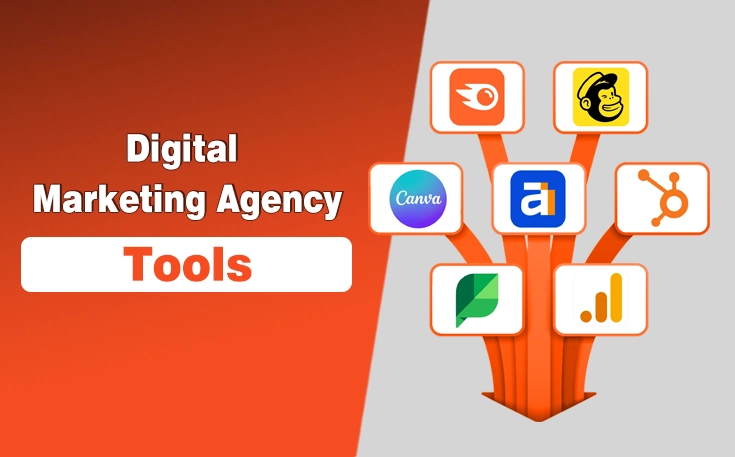WordPress is one of the best content management systems that has gained popularity, but also it is a big target for attackers.
According to ExplodingTopic, there were over 6 billion malware attacks in 2023 worldwide. Your business website could also be a victim of a cyber attack if not protected well.
Therefore, you have to develop an extensive approach to ensuring the security of your WordPress website.
Do you want to make your WordPress website secure and protected? Keep reading!
WordPress Website Security Guide – 15 Ways to Protect
Here is a comprehensive guide that will provide you with practical tips for making your WordPress site more secure.
1. Keep WordPress Core, Themes, and Plugins Updated
WordPress Core: Regularly updating the WordPress core is important. Developers release updates to address security vulnerabilities and improve overall stability. To keep your website secure, enable automatic updates for minor releases and regularly check for major updates.
Themes and Plugins: Outdated WordPress plugins and themes are common entry points for hackers. Ensure that all themes and plugins are up to date. Be cautious when selecting themes and plugins, as poorly maintained ones can pose security risks.
2. Use Strong and Unique Passwords
Weak passwords are a major security risk. Ensure you create strong passwords consisting of upper- and lower-case letters, numbers, and symbols. Also, make sure to have a distinct password, as this will reduce the chances of the administration getting hacked. Try using a password generator, which can create and save complex passwords for your security.
3. Implement Two-Factor Authentication
Enabling Two-Factor Authentication or 2FA adds extra security to your WordPress login process. Users must provide a second form of verification, usually a one-time code sent to their mobile device, in addition to their password. Popular 2FA plugins like Google Authenticator or Authy can help protect your login process from unauthorized access.

4. Regular Backups
Regularly backing up your website is a vital safety net. In case of a security breach, data loss, or a website malfunction, having a recent backup allows you to restore your website to a previous, secure state. Use reliable backup plugins or services to automate this process and store backups securely on separate servers or cloud services.
5. Limit Login Attempts
Limiting the number of login attempts can deter brute-force or credential stuffing attacks. Brute force attacks involve hackers trying multiple combinations of usernames and passwords until they gain access. Use security plugins to set a limit on login attempts and configure automatic lockouts for users who exceed this limit.
6. Secure File Permissions
File permissions on your server must be properly configured to prevent unauthorized changes. Generally, files should be set to 644, and directories should be set to 755. Limit write permissions to the necessary files and directories, and avoid granting global write access. Most hosting providers offer guidelines on setting the correct file permissions.
7. Install a Security Plugin
Security plugins can enhance your website’s defenses. They offer features such as firewall protection, malware scanning, and login attempt monitoring. Popular options include Wordfence, Sucuri Security, and iThemes Security. These plugins provide real-time security monitoring and protection against common security threats.
8. Disable Directory Listing
By default, WordPress allows directory listing, which means that if someone accesses a directory without an index file (e.g., index.php), they can see the list of files in that directory. This can potentially expose sensitive information. To disable directory listing, modify your site’s .htaccess file to include the directive “Options -Indexes.”
9. Regularly Scan for Malware
Regularly scanning your website for malware is a preventive measure to identify and remove any malicious code. Security plugins and online services can help you perform these scans. Scan your website at least weekly and after major updates or changes to ensure early detection and removal of any potential threats.

10. Keep an Eye on User Permissions
Review and manage user permissions regularly. Ensure that users have only the permissions they need and nothing more. Remove any inactive or unnecessary accounts. Limit the number of users with administrator privileges to reduce the risk of internal security breaches.
11. Use SSL Encryption
An SSL, also known as a Secure Sockets Layer certificate, encrypts the data exchanged between your website and its visitors. This encryption protects user data and boosts your website’s search engine ranking as well. Many hosting providers offer free SSL certificates, so take advantage of this added layer of security.
Read Also: How to Sell Videos Online with WordPress
12. Monitor Your Website’s Security
Regularly monitor the security of your website through log files, security plugins, and services. Set up alerts to be notified of any suspicious activity promptly. Monitoring helps you detect and respond to security issues in a timely manner. Check server logs, security plugin logs, and activity logs for unusual behavior.
13. Secure Your Hosting Environment
Your hosting environment plays a significant role in your website’s security. Choose a reputable hosting provider that offers security features such as firewalls, DDoS protection, and server monitoring. Shared hosting can be less secure than VPS or dedicated hosting options, so consider your specific needs.
14. Educate Your Team
If you have a team working on your website, ensure that they are aware of security best practices. Train them to recognize phishing attempts and suspicious activities, as well as the importance of maintaining strong passwords. Regularly update your team on emerging security threats and best practices.
15. Stay Informed
Stay informed about the latest security threats and best practices. Follow reputable sources, forums, and security blogs to stay up to date with the latest developments. Consider attending security webinars, conferences, and workshops to enhance your knowledge.
Ending Note
These security practices can significantly reduce the risk of your WordPress website falling victim to cyber threats. Remember that no system can be entirely immune to attacks, but a proactive and cautious approach to security can keep your website and its visitors safe. Implementing these security measures protects your website and enhances your credibility and trustworthiness in the digital landscape.
Need custom app with amazing features?
Get a Quote




